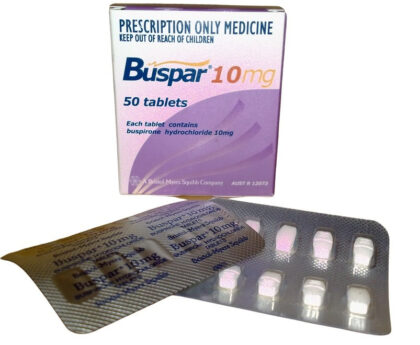Suprax, generically known as Cefixime, is a third-generation cephalosporin antibiotic effective against a wide range of bacterial infections. It works by inhibiting the synthesis of the bacterial cell wall, leading to the destruction of the bacteria. Suprax is commonly used to treat infections such as bronchitis, urinary tract infections, otitis media, and uncomplicated gonorrhea. It is available in oral forms, including tablets and suspensions, making it convenient for patients of all ages. While generally well-tolerated, side effects may include gastrointestinal disturbances, allergic reactions, and, rarely, liver enzyme elevations. It is important to complete the full course of therapy with Suprax to ensure the infection is fully eradicated and to prevent the development of antibiotic resistance.


Broad-Spectrum Efficacy
Suprax is highly effective against a broad range of bacterial infections, making it a versatile treatment option. Its ability to target both Gram-positive and Gram-negative bacteria ensures comprehensive coverage, particularly in common infections like urinary tract infections and respiratory tract infections. This broad efficacy makes Suprax a reliable choice for many patients.

Convenient Dosage Forms
Suprax is available in multiple oral dosage forms, including tablets and suspensions, which makes it convenient for patients of all ages. This flexibility allows healthcare providers to tailor the treatment to individual needs, ensuring better patient compliance. The convenience of oral dosing makes Suprax an easy and effective option for managing bacterial infections at home.

Proven Track Record
Suprax has a well-established history of safe and effective use in treating bacterial infections. Its consistent performance over the years has made it a trusted antibiotic among healthcare providers. Patients can rely on Suprax for its proven efficacy and safety, making it a dependable option for treating various bacterial infections.
Suprax – Product Description
Overview:
Suprax (Cefixime) is a third-generation cephalosporin antibiotic widely used to treat a variety of bacterial infections. It works by disrupting the synthesis of the bacterial cell wall, leading to bacterial death. Suprax is particularly effective against a wide range of bacteria, including those causing respiratory, urinary, and sexually transmitted infections. Available in oral forms such as tablets and suspensions, Suprax is convenient for both adults and children. The drug is generally well-tolerated, with side effects like gastrointestinal discomfort and, in rare cases, allergic reactions. Its broad-spectrum efficacy and ease of use make Suprax a valuable option in the treatment of bacterial infections.
Indications:
Suprax is indicated for the treatment of various bacterial infections, including respiratory tract infections like bronchitis, urinary tract infections, and uncomplicated gonorrhea. It is also effective in treating otitis media (middle ear infections) and pharyngitis. Suprax’s broad-spectrum activity against both Gram-positive and Gram-negative bacteria makes it suitable for treating mixed infections or infections where the causative bacteria are not immediately identified.
How to Use:
Suprax should be taken exactly as prescribed by a healthcare provider. It is typically administered orally, with the dosage depending on the type and severity of the infection, as well as the patient’s age and weight. Suprax can be taken with or without food, though it’s generally recommended to take it with food to reduce stomach upset. Patients should complete the entire course of treatment, even if they start feeling better, to ensure the full eradication of the infection and to prevent antibiotic resistance. The suspension form should be shaken well before use, and accurate measurement is important to ensure the correct dose is administered.
Advantages:
Suprax offers several advantages in the treatment of bacterial infections. Its broad-spectrum efficacy makes it effective against a wide range of bacteria, providing comprehensive treatment for various infections. The availability of both tablet and suspension forms makes it convenient for patients of all ages, ensuring better compliance. Additionally, Suprax’s well-established safety profile and effectiveness in treating common infections like urinary tract infections and bronchitis further enhance its value as a go-to antibiotic.
Conclusion:
Suprax (Cefixime) is a versatile and effective antibiotic that plays a crucial role in the treatment of bacterial infections. Its broad-spectrum activity, convenient dosage forms, and proven safety and efficacy make it a reliable choice for patients and healthcare providers alike. Completing the full course of therapy with Suprax is essential to ensure the infection is fully eradicated and to prevent the development of antibiotic resistance. With its long history of successful use, Suprax remains a trusted option in the fight against bacterial infections.
Composition:
Suprax contains Cefixime as its active ingredient, a third-generation cephalosporin antibiotic. The inactive ingredients in Suprax tablets or suspensions may include substances like microcrystalline cellulose, magnesium stearate, and flavoring agents in the suspension form to improve palatability. These ingredients work together to ensure the stability and effectiveness of the medication, making Suprax a potent option for treating bacterial infections.
Note:
Patients taking Suprax should be aware of the potential for allergic reactions, particularly if they have a history of allergies to penicillins or cephalosporins. Gastrointestinal side effects, such as diarrhea, can occur, and in rare cases, a more serious form of diarrhea (Clostridium difficile-associated diarrhea) may develop. Patients should also inform their healthcare provider if they have kidney disease, as dosage adjustments may be necessary. It’s important to store the suspension form in the refrigerator and to discard any unused portion after 14 days. As with all antibiotics, completing the prescribed course is crucial to prevent the development of resistant bacteria.
Suprax: Trusted Antibiotic for Treating Bacterial Infections
In this informative video, we explore Suprax.
Why us?

Authenticity Guaranteed:
We ensure that every batch of Capoten is sourced from trusted manufacturers, providing you with genuine medication that meets the highest quality standards.

Competitive Pricing:
Our pricing is designed to make essential medications like Capoten accessible to all, offering competitive rates and frequent discounts to help you manage your health affordably.




